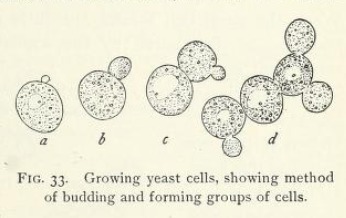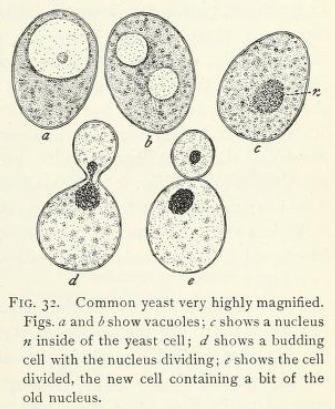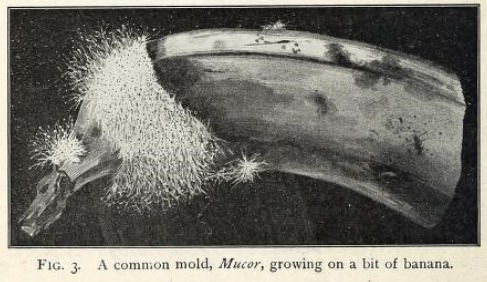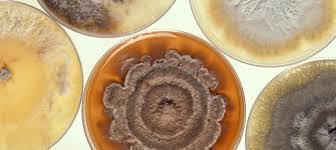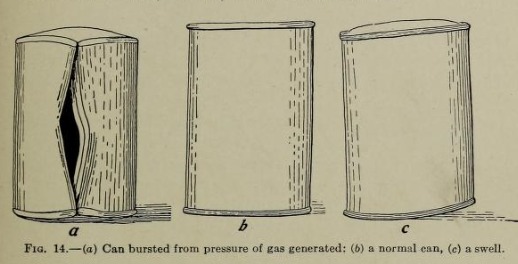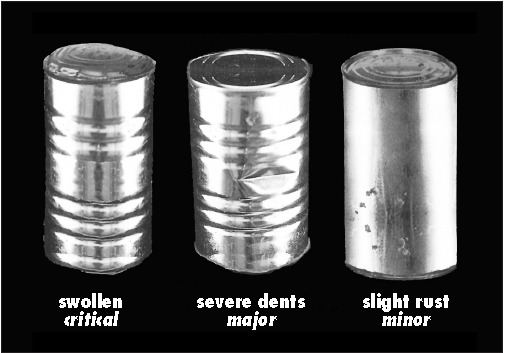Spoilage
Yeast, mold, and bacteria are the three largest culprits of food spoilage and can each result from improper or insufficient processing.
When supplied with food (in the form of sugar), warmth, moisture, and air, yeasts grow…produc[e] alcohol and a gas called carbon dioxide.
--Creswell, M. E. & Malcolm, O. P. (1917). Home canning of fruits and vegetables: As taught to canning club members in the southern states. United States Department of Agriculture: Farmers' Bulletin, 853. Retrieved from https://archive.org/details/CAT87202342
Molds thrive in dampness and darkness and prefer freedom from currents of air. They require oxygen, moisture, and warmth, and feed upon sugar and starches.
--Creswell, M. E. & Malcolm, O. P. (1917). Home canning of fruits and vegetables: As taught to canning club members in the southern states. United States Department of Agriculture: Farmers' Bulletin, 853. Retrieved from https://archive.org/details/CAT87202342
Both
[y]easts and molds are easily destroyed by heat in canning.
--Stanley, L. & Stienbarger, M. C. (1936). Home canning of fruits, vegetables, and meats. United States Department of Agriculture: Farmers' Bulletin, 1762. Retrieved from https://archive.org/details/CAT87205286
Bacteria on the other hand
are much more difficult to destroy than molds and yeasts and are the chief foe to combat in all preserving of foods.
--Creswell, M. E. & Malcolm, O. P. (1917). Home canning of fruits and vegetables: As taught to canning club members in the southern states. United States Department of Agriculture: Farmers' Bulletin, 853. Retrieved from https://archive.org/details/CAT87202342
There are several types of bacterial spoilage that can occur in canned foods including flat sour, sulfide, and putrefaction, but the most dangerous bacterial spoilage is botulism.
 An official website of the United States government.
An official website of the United States government.


